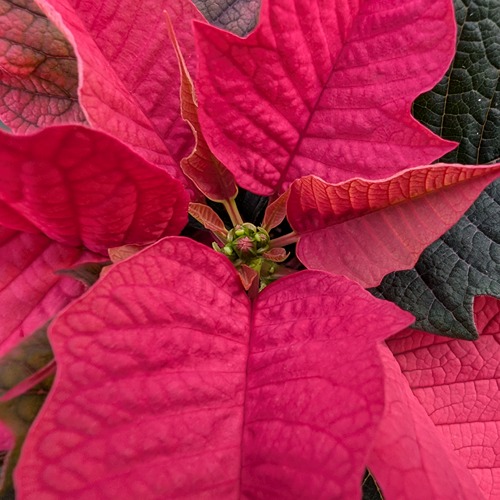Spotty weather has Indiana grain crops off to an uneven start
Bob Nielsen, Purdue Extension corn specialist, says he has never seen a growing season get off to such an uneven start as this one. Heavy rains in April and May delayed planting and left standing water in many parts of Indiana while other areas baked in unusually hot and dry conditions.
As a result, conditions of the state’s grain crops vary significantly from one region to another. Farm fields are a patchwork pattern of robust, vibrant green plants in a few places and wilted, pale yellow ones elsewhere - often within a few miles of each other and sometimes on the same property. Replanting due to poor germination and ponding has been common.
“It’s hard to get a fix on the whole state,” Nielsen admits.
Purdue Extension soybean specialist and associate professor of agronomy Shaun Casteel says the state’s other major grain crop is also a mixed bag.
“It’s not outstanding, by any means,” Casteel said. “Many of the soybean fields experienced the same wet and cold soils as the corn did early on whereas other soybean fields were delayed in planting as farmers were replanting the corn. The final string of fields were delayed in establishment and development as the weather pendulum swung to the hot and dry conditions in the first weeks of June.”
Due to the inconsistent spring weather, many crops never had a chance to get well established.
According to the latest U.S. Department of Agriculture weekly Crop Progress report, issued June 19, only 45 percent of the Indiana corn crop was in “good” or “excellent” condition, compared with 72 percent at the same time last year. Soybeans fare only a little better - 52 percent are rated “good” or “excellent” compared with 72 percent in 2016.
The good news is that it is possible for crops to recover from a bad start.
Since the USDA began issuing its weekly crop condition reports in 1986, Indiana has experienced five other years when conditions at this point in the growing season were as bad or worse than this year - 1988, 1990, 1996, 2007 and 2012. Discounting the drought years of 1988 and 2012 when yields were down significantly, results have been mixed.
“This year more resembles 1990, 1996 and 2007,” said Chris Hurt, Extension agricultural economist. “In 1990 we ended up 6 percent above trend-line yield. In 1996 we were down 7 percent and in 2007 we finished right at the trend-line yield.”
Hurt urged producers to be patient and hope for better weather.
“Give this crop some time,” he said. “Much of the yield is still to be determined. We’ve gotten off to a tough start but the rest of the season is what’s important.”
Although the weekly crop condition reports have been discouraging so far this year - Indiana ranks near the bottom of all major grain-producing states in the condition of its corn and soybeans - both Nielsen and Casteel said it is still too soon to forecast below-average yields. Even hard-hit crops have time to recover if the weather cooperates.
“Things are turning around for those in dry areas who did get rain over the past couple of weeks,” Casteel said.
Purdue Extension educators give vivid accounts of crop conditions in their areas.
“I’m in a field where there is some standing water and just a quarter-mile down the road, the ground is cracked,” said Daniel Gabbard, Purdue Extension-Shelby County director. Educators in Steuben, Jay and Adams counties in northeast Indiana reported very dry soil conditions while David Osborne, Purdue Extension-Ripley County director, said his county in southeastern Indiana had up to 7 inches of rain in the past week.
“We have folks that are in a pretty tough situation,” Osborne said. “Some fields will not be planted.”
Purdue Extension offers a number of resources to help farmers facing difficult crop management decisions:
* Nielsen’s Chat ‘n Chew Café website is regularly updated with current news and information on a variety of topics, including nitrogen management for Indiana corn, corn replant considerations, hybrid maturities for delayed planting and avoiding soil compaction in wet fields. To access the site, go to http://www.kingcorn.org/cafe.
* Nielsen also provides up-to-date information on his Twitter feed at @PurdueCornGuy.
* Nielsen and Jim Camberato, agronomy professor and Purdue Extension soil fertility specialist, co-authored an article on “Soil Sampling to Assess Current Soil Nitrogen” for Purdue’s Pest & Crop online newsletter. According to Camberato, heavy rainfall and flooding often result in the loss of applied and soil-derived nitrogen. Plants without enough nitrogen become wilted and discolored. Testing is the best way to determine how much nitrogen a crop needs to stay healthy. The article is available at https://extension.entm.purdue.edu/pestcrop/2017/Issue11/.
* Nielsen discusses how the timing of stress factors - including excessive drying of the upper soil profile - can affect plant development in the article “’Rootless’ or ‘Floppy’ Corn Syndrome,” available at https://extension.entm.purdue.edu/pestcrop/2017/Issue12/.
* Casteel’s article “Late Soybean Planting Considerations” also appeared in Pest & Crop and provides practical guidance on seeding rate, row width and maturity group. It is available at https://extension.entm.purdue.edu/pestcrop/2017/Issue10/.
* Lyndon Kelley, irrigation specialist for Purdue and Michigan State University Extension services, has compiled a series of informational resources on irrigation. These are available at http://msue.anr.msu.edu/program/info/irrigation. An irrigation scheduling fact sheet is available at http://msue.anr.msu.edu/uploads/235/67987/factsheets/3_IrrigationSchedulingToolsJune2016.pdf.
For more information on local conditions throughout Indiana, farmers are urged to contact their county Purdue Extension office.





